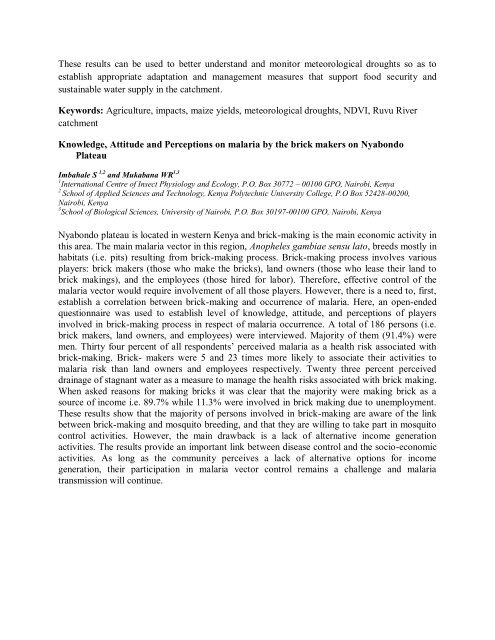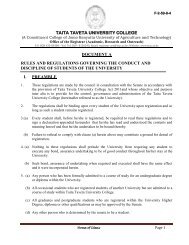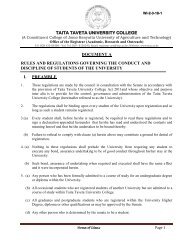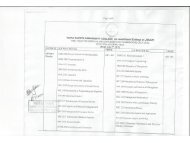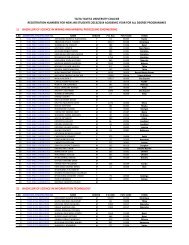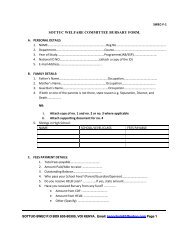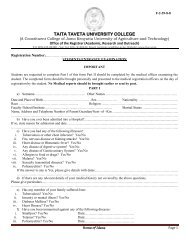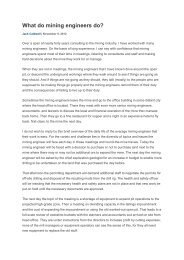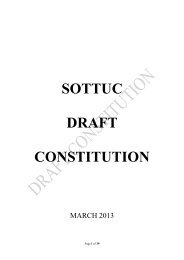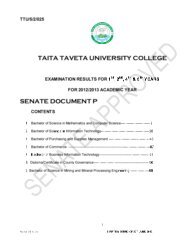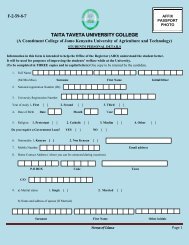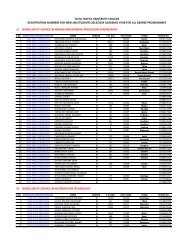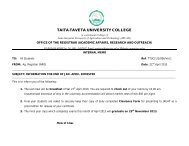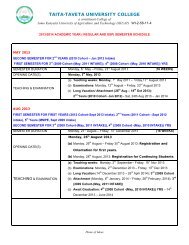Conference Book of Abstracts - Taita Taveta University College
Conference Book of Abstracts - Taita Taveta University College
Conference Book of Abstracts - Taita Taveta University College
- No tags were found...
Create successful ePaper yourself
Turn your PDF publications into a flip-book with our unique Google optimized e-Paper software.
These results can be used to better understand and monitor meteorological droughts so as toestablish appropriate adaptation and management measures that support food security andsustainable water supply in the catchment.Keywords: Agriculture, impacts, maize yields, meteorological droughts, NDVI, Ruvu RivercatchmentKnowledge, Attitude and Perceptions on malaria by the brick makers on NyabondoPlateauImbahale S 1,2 and Mukabana WR 1,31 International Centre <strong>of</strong> Insect Physiology and Ecology, P.O. Box 30772 – 00100 GPO, Nairobi, Kenya2School <strong>of</strong> Applied Sciences and Technology, Kenya Polytechnic <strong>University</strong> <strong>College</strong>, P.O Box 52428-00200,Nairobi, Kenya3 School <strong>of</strong> Biological Sciences, <strong>University</strong> <strong>of</strong> Nairobi, P.O. Box 30197-00100 GPO, Nairobi, KenyaNyabondo plateau is located in western Kenya and brick-making is the main economic activity inthis area. The main malaria vector in this region, Anopheles gambiae sensu lato, breeds mostly inhabitats (i.e. pits) resulting from brick-making process. Brick-making process involves variousplayers: brick makers (those who make the bricks), land owners (those who lease their land tobrick makings), and the employees (those hired for labor). Therefore, effective control <strong>of</strong> themalaria vector would require involvement <strong>of</strong> all those players. However, there is a need to, first,establish a correlation between brick-making and occurrence <strong>of</strong> malaria. Here, an open-endedquestionnaire was used to establish level <strong>of</strong> knowledge, attitude, and perceptions <strong>of</strong> playersinvolved in brick-making process in respect <strong>of</strong> malaria occurrence. A total <strong>of</strong> 186 persons (i.e.brick makers, land owners, and employees) were interviewed. Majority <strong>of</strong> them (91.4%) weremen. Thirty four percent <strong>of</strong> all respondents‟ perceived malaria as a health risk associated withbrick-making. Brick- makers were 5 and 23 times more likely to associate their activities tomalaria risk than land owners and employees respectively. Twenty three percent perceiveddrainage <strong>of</strong> stagnant water as a measure to manage the health risks associated with brick making.When asked reasons for making bricks it was clear that the majority were making brick as asource <strong>of</strong> income i.e. 89.7% while 11.3% were involved in brick making due to unemployment.These results show that the majority <strong>of</strong> persons involved in brick-making are aware <strong>of</strong> the linkbetween brick-making and mosquito breeding, and that they are willing to take part in mosquitocontrol activities. However, the main drawback is a lack <strong>of</strong> alternative income generationactivities. The results provide an important link between disease control and the socio-economicactivities. As long as the community perceives a lack <strong>of</strong> alternative options for incomegeneration, their participation in malaria vector control remains a challenge and malariatransmission will continue.


